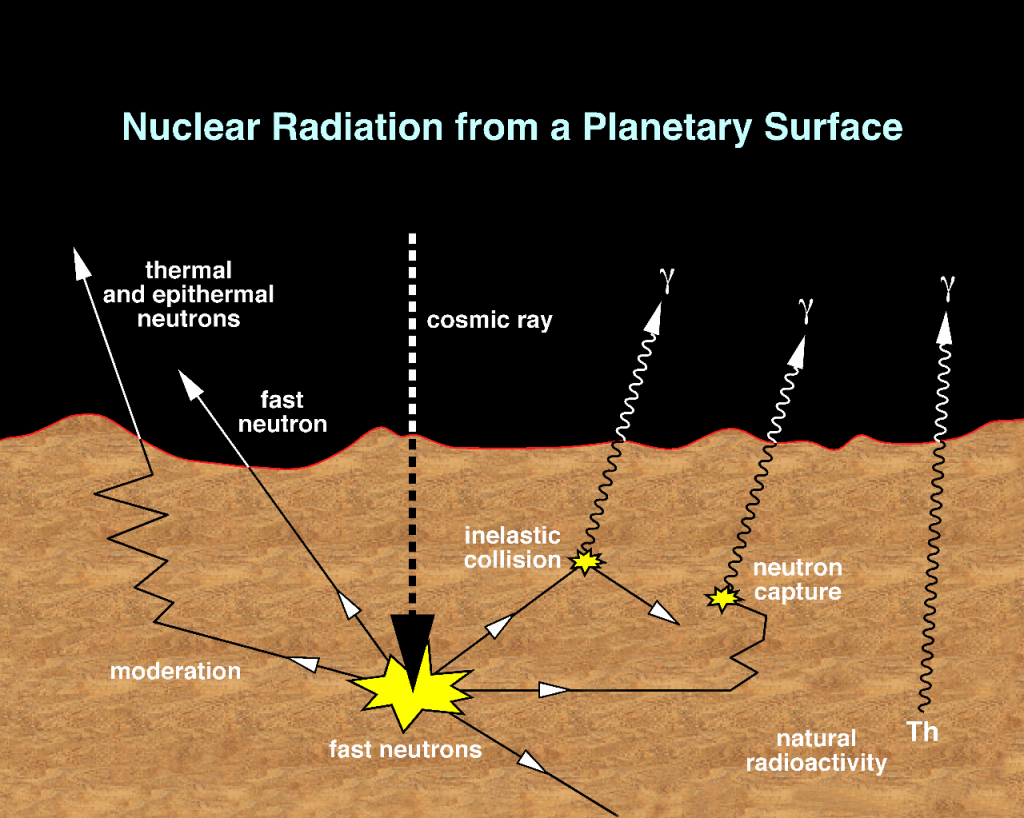New Material Systems for Neutron Dosimetry
E. C. Frey1, P. N. First2, Z. Jiang2, and T.M. Orlando1,2
1School of Chemistry & Biochemistry, 2School of Physics, Georgia Institute of Technology
Summary: Radiation remains one of the most challenging obstacles towards sustained human presence on non-terrestrial bodies. Given the trajectory of human space exploration in the upcoming decades, there is much potential application for robust dosimeters that can be incorporated into spacesuit designs at varying locations to measure cumulative, tissue-specific dose. With this in mind it was proposed to investigate novel 2D material systems as a technological model for low-power, lightweight, and real-time radiation detectors [1]. Our initial effort hopes to utilize graphene’s unique conductivity and boron-10’s (10B) unique ability to “capture” neutrons to develop a resistance-based neutron detector. Neutrons are generated as secondaries from high-energy cosmic ray impacts (Figure 1) and pose a unique health risk to astronauts. As such, exposure should be quantified and limited. If our prototype holds for biologically-relevant neutron energy spectra (Figure 2), it would complement current radiation monitoring systems and offer a flexible dosimetry scaffolding conducive to spacesuit integration.



